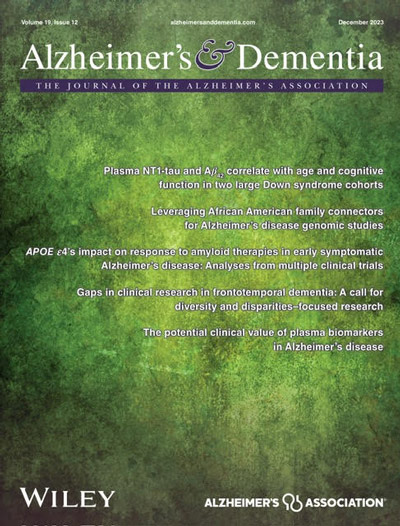History of Alzheimer's Disease Research Centers: From inception in 1984 to evolution beyond 2025
IF 11.1
1区 医学
Q1 CLINICAL NEUROLOGY
引用次数: 0
Abstract
This paper reviews the history of the so-called Alzheimer Movement in the United States, the origins of the Alzheimer's Disease Research Centers (ADRC) program, and their critical role in shaping the National Plan to Address Alzheimer's Disease by 2035. The long narration unfolds in three parts: (1) Beginnings, (2) Accomplishments, and (3) Charting the Next Step.
Highlights
- This paper reviews the history of the Alzheimer movement in the United States, the origins of the ADRC program, and the centers’ critical role in shaping the National Plan to Address Alzheimer's Disease by 2035. The long narration unfolds in three parts: (1) Beginnings: Establishing a Foothold, (2) Accomplishments: Key Achievements and Future Lessons, and (3) Charting the Next Step: Rethinking the ADRC's role after 2035.
- This perspective offers a high-level view of the scientific landscape during the inception of programmatic research in aging and dementia. The story covers the significant challenges involved in starting such an undertaking. It recounts the rationale, intent, achievements, and structure of the ADRCs.
- The narrative focuses on the politics of science that shaped programs like the ADRC and NACC, particularly through earmarked funding. It explains why the program prioritized the creation of infrastructure and building capacity for longitudinal clinical studies.
- The discussion of future directions will (1) explain the reasoning for reformulating the mission and structure of the ADRC's concept to accommodate a comprehensive range of emerging needs and (2) explore the role of the re-engineered centers as a catalyst to promote and maintain brain health to prevent cognitive impairments. It will suggest some possible options to restructure some current centers into comprehensive regional centers as instruments to deal with new challenges.

阿尔茨海默病研究中心的历史:从1984年成立到2025年以后的发展。
本文回顾了所谓的阿尔茨海默病运动在美国的历史,阿尔茨海默病研究中心(ADRC)项目的起源,以及他们在制定2035年解决阿尔茨海默病国家计划中的关键作用。长篇叙述分三部分展开:(1)开始,(2)成就,(3)规划下一步。重点:本文回顾了美国阿尔茨海默病运动的历史,ADRC项目的起源,以及这些中心在制定2035年解决阿尔茨海默病国家计划中的关键作用。长篇叙述分三个部分展开:(1)开始:建立立足点;(2)成就:主要成就和未来的教训;(3)绘制下一步:重新思考2035年后ADRC的角色。这一视角提供了一个高层次的科学景观,在开始的程序化研究在老龄化和痴呆症。这个故事涵盖了开始这样一项事业所涉及的重大挑战。它叙述了adrc的基本原理、意图、成就和结构。故事的重点是科学政治,它塑造了像ADRC和NACC这样的项目,特别是通过专项资金。它解释了为什么该项目优先考虑为纵向临床研究建立基础设施和能力建设。对未来方向的讨论将(1)解释重新制定ADRC概念的使命和结构的原因,以适应广泛的新需求;(2)探索重新设计的中心作为促进和维持大脑健康以预防认知障碍的催化剂的作用。它将提出一些可能的选择,将一些现有的中心改组为综合性区域中心,作为应对新挑战的工具。
本文章由计算机程序翻译,如有差异,请以英文原文为准。
求助全文
约1分钟内获得全文
求助全文
来源期刊

Alzheimer's & Dementia
医学-临床神经学
CiteScore
14.50
自引率
5.00%
发文量
299
审稿时长
3 months
期刊介绍:
Alzheimer's & Dementia is a peer-reviewed journal that aims to bridge knowledge gaps in dementia research by covering the entire spectrum, from basic science to clinical trials to social and behavioral investigations. It provides a platform for rapid communication of new findings and ideas, optimal translation of research into practical applications, increasing knowledge across diverse disciplines for early detection, diagnosis, and intervention, and identifying promising new research directions. In July 2008, Alzheimer's & Dementia was accepted for indexing by MEDLINE, recognizing its scientific merit and contribution to Alzheimer's research.
 求助内容:
求助内容: 应助结果提醒方式:
应助结果提醒方式:


